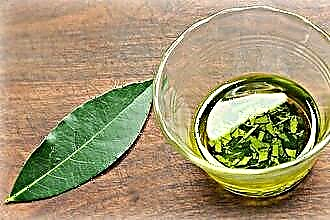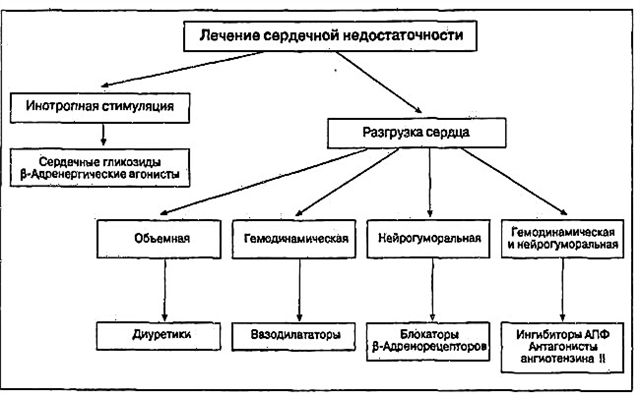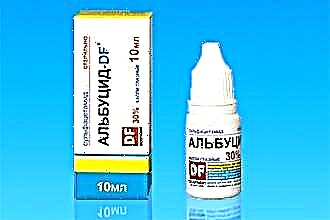Sinusitis is an inflammatory process of the mucous membranes of the maxillary sinuses. It can proceed in an acute form as a result of previous viral diseases, bacterial lesions, exposure to allergens and other reasons. If timely adequate treatment of the acute form of the disease has not been carried out, then chronic sinusitis may develop. Among the various methods of treating chronic sinusitis with folk remedies, the most effective are rinsing, inhalation and herbal medicine.
Chronic sinusitis symptoms
 Chronic sinusitis is characterized by a sluggish and prolonged course, which is characterized by phases of remission and exacerbations, usually several times a year. Depending on the degree of neglect of the pathological process, certain signs may appear in the cavities, the most common are headache, stuffy nose and weakness. Since the maxillary sinuses are involved in the pathogenic process, doctors also call this disease "chronic maxillary sinusitis". Since we are talking about a disease of a sluggish nature, with periodic exacerbations, then its symptoms can manifest themselves in different forms and with varying degrees of intensity.
Chronic sinusitis is characterized by a sluggish and prolonged course, which is characterized by phases of remission and exacerbations, usually several times a year. Depending on the degree of neglect of the pathological process, certain signs may appear in the cavities, the most common are headache, stuffy nose and weakness. Since the maxillary sinuses are involved in the pathogenic process, doctors also call this disease "chronic maxillary sinusitis". Since we are talking about a disease of a sluggish nature, with periodic exacerbations, then its symptoms can manifest themselves in different forms and with varying degrees of intensity.
They manifest themselves differently in each person, but almost all have similar signs.
With the activation of the disease, the following signs are observed:
- Increased body temperature up to 37.5 degrees, slight chills.
- Pain syndrome radiating to different parts of the head. Most often it hurts in the forehead area, the projection of the accessory pockets, the root of the nose, the eye sockets. The unpleasant sensations are aggravated by coughing, turning the head, and especially when the head is tilted forward.
- Feeling of weakness, weakness and general malaise.
- Severe nasal congestion, discharge is green. After about a week, a purulent process develops in the air pockets, and the snot becomes yellow.
- Frequent sneezing due to irritation of the mucous membranes.
- The voice changes and becomes nasal.
Symptoms of chronic sinusitis in the remission stage are less pronounced, have a "blurry" character, but make it clear enough about the presence of an inflammatory process in the body:
- In the throat, the presence of a foreign object ("lump in the throat") is constantly felt due to the mucus flowing down from the diseased sinuses.
- The nose is constantly stuffy, from time to time a discharge begins from the sinuses, which does not respond to the usual medications.
 Headache, located in the eye area and "behind the eyes", periodically increases to very high values, which are described by patients as "excruciating". The most severe pain syndrome manifests itself when the patient lies.
Headache, located in the eye area and "behind the eyes", periodically increases to very high values, which are described by patients as "excruciating". The most severe pain syndrome manifests itself when the patient lies.- A feeling of pressure from the inside in the cheekbones and cheeks over the affected accessory chambers, the skin becomes sensitive and swollen.
- Unmotivated lacrimation due to infection of the lacrimal sac.
- Impaired sense of smell, which impairs quality of life and alters taste.
- Swelling of the eyelids and manifestations of conjunctivitis in the morning.
In fact, based on the source of the information received, all signs of chronic sinusitis can be divided into three types:
- Subjective local. It is determined based on the patient's complaints and usually includes nasal congestion, purulent sinus discharge, persistent headaches, pressure under the eyes, lack of nasal breathing, and impaired appetite.
- Objective local. With rhinoscopy, the doctor detects swelling of tissues in the nasal cavity and anastomosis, a strip of pus from under the middle turbinate, and the presence of polyps. Dental examination gives a picture of tooth decay or periodontitis. On a general examination, diffuse hyperemia and puffiness of the membranes of the eyes are noticeable, the presence of cracks or dermatitis between the upper lip and nostrils from regular exposure to exudate.
- General symptoms indicating an intoxication of the body. These include weakness, fatigue, headache, muscle cramps, sneezing, and a cough that develops due to the constant flow of infected secretions down the walls of the throat.
How to get rid of sinusitis at home
A disease such as sinusitis has been known to mankind for more than two thousand years. Therefore, the treatment of chronic sinusitis with folk remedies shows good results, especially if carried out correctly. Therapy based on natural substances has a softer effect on the body and does not have a large number of contraindications and side effects.
 With sluggish sinusitis, this approach to treatment reduces the number of exacerbations and relieves symptoms during remission (improves nasal breathing, reduces pressure in the affected accessory pocket).
With sluggish sinusitis, this approach to treatment reduces the number of exacerbations and relieves symptoms during remission (improves nasal breathing, reduces pressure in the affected accessory pocket).
Experts advise supplementing traditional drug therapy with folk recipes and discussing the use of certain recipes with your doctor.
Traditional methods are best used during the period of remission of the disease, since with an exacerbation, you can get the opposite result.
When making any drugs, one must not forget the fact that many people have an individual intolerance to certain substances, including plant or animal origin.
Therefore, using a homemade decoction or infusion, you first need to give the patient a very small dose and look at his reaction. Only if no negative manifestations are noted, you can use this remedy.
Before making a remedy, it is advisable to look on the Internet for information about the characteristics of each specific ingredient, and even better, consult with an otolaryngologist. Particular attention should be paid to children, pregnant women, the elderly and people with severe chronic illnesses.
Rinsing the nose
The most important condition for relieving inflammation in the nasal cavity is multiple rinsing of the nasal passages to liquefy and drain exudate. Treatment with folk remedies provides for this procedure using decoctions of biologically active components:
- Saline solution is the most common nasal rinse. It uses sea salt, which can be bought at any pharmacy, or ordinary table salt. It is important not to make the liquid very saturated, so as not to burn the epithelial layer and not dry out the mucous membrane, half a teaspoon of salt in a glass of water is enough. To separate undissolved particles and impurities, it is better to let the solution settle and carefully pour the liquid into another glass.Water with a temperature of about 40 degrees should pass through the nasal cavity by gravity: pour into one nostril and flow out through the other.

- Washing with propolis. A quarter teaspoon of salt and 20 drops of alcoholic propolis tincture are added to a glass of warm water.
- Chamomile has a pronounced anti-inflammatory effect. Half a teaspoon of chamomile flowers is brewed in a glass of boiling water, infused and filtered. A product with celandine is prepared according to the same recipe.
Washing at home with chronic sinusitis is best done with a special teapot that allows you to deliver a uniform stream, but you can also use a small syringe or a 20 ml syringe without a needle.
Nasal drops
Chronic sinusitis responds well to the use of drops prepared on the basis of herbal ingredients. Some of them are very effective, their effectiveness has been tested over time.
Aloe juice is often used in medications, it is good for relieving puffiness, regenerates the mucous membrane and has an anti-inflammatory effect. The juice should be squeezed out of the old lower leaves of the plant. Several tried and tested drop recipes with this herb:
- A tablespoon of aloe is mixed with onion juice and buried in the nostrils.
- Drip freshly squeezed pure juice of the plant 3 times a day, three drops.
- Mix equal proportions of Kalanchoe and aloe juice, add a little salt, a teaspoon of honey and mix. Dripping 3 drops 2 times a day.
- Mix honey and aloe juice, add a few drops of celandine to them and drip into the nostrils 3 times a day. It is advisable not to swallow this mixture, as celandine can negatively affect the stomach.

Cyclamen is a poisonous plant, but it is a very effective way to treat chronic sinusitis by cleansing the sinuses of purulent exudate.
To prepare the medicine, the root of the plant is used, which is rubbed on a grater, the juice is squeezed out of the resulting gruel through several layers of gauze. High concentrations of cyclamen juice are dangerous, so no more than a teaspoon of juice is poured into a glass of water. It is undesirable to use this recipe for pregnant women and people with allergies.
The solution can be used for a week, once a day, 2 drops. After the procedure, you need to lie down for a few minutes and massage the sinus area on the front of the face. The action occurs in a few minutes, a strong sneezing begins, the purulent secret leaves. Thanks to this, the headache is relieved and the night sleep is normalized.
Also, for the preparation of drops at home, the following recipes are used:
- Fresh comb honey drip into the nostrils 1-2 drops every few hours until the condition improves.
- Ghee is instilled into the nose for 5 drops in the morning and in the evening, after which the patient lies with his head thrown back for about 10 minutes.
- Freshly squeezed carrot and beet juice are mixed in a 1: 1 ratio. It is poured into the nostrils, 2 drops 3-4 times a day. For children, you can reduce the concentration by adding one part of water.
- Prepare a mixture of 3 tablespoons of sea buckthorn oil and 1 teaspoon of onion juice, apply 2-3 times a day.
Ointments and compresses

Treatment with folk remedies gives room for a variety of combinations of herbal remedies and medicines. Ointments promote the regeneration of the affected areas of the mucous membrane, relieve pain, relieve inflammation and accelerate the patient's recovery. They are applied directly to the epithelial integument of the nasal passages, as well as using gauze or cotton wool.
- Honey ointment. Use a grater to use a simple, fragrance-free baby soap. Mix a tablespoon of soap shavings with the same amount of milk, honey and vegetable oil. Heat in a water bath until the soap melts, then pour in a spoonful of alcohol and remove from heat. The resulting substance is poured into a jar and cooled, then stored in the refrigerator. Method of application: cotton swabs are dipped in ointment and injected into the nostrils for 15 minutes, repeat three times a day.
- Mix the onion, ground to a mushy state, with pounded spruce resin (200 g), olive oil (50 g) and copper sulfate (15 g), boil and cool. Lubricate the nasal passages, this creates a good warming effect.
- Vishnevsky's ointment (1 tablespoon) is combined with components such as honey (as an option, propolis), aloe and onion juice, half a teaspoon each. Warm up in a water bath and inject into the nose using gauze turundas.
- Melt 5 tablespoons of natural bee honey in a water bath and pour in 1 tablespoon of vegetable oil, then add a little garlic or onion juice.
- Combine 50 g of dioxidine ointment, 2 tablespoons of aloe juice and a couple of drops of menthol oil.
All ointments help to remove purulent discharge from the nose. For the greatest effect, it is desirable for the patient to be in the supine position while using the ointments, or, at least, not to expose himself to physical exertion.
Unlike ointments, compresses do not come into contact with the mucosal epithelium and affect the infected maxillary sinus through the skin of the face. For this, the following ingredients are used:
 Clay. With the help of hot water, a piece of clay is brought to the consistency of soft plasticine, then in a warm form it is laid out on the sites of the projection of the cavities on the face. Put pieces of gauze soaked in heated vegetable oil under the clay plates. Keep for 1 hour.
Clay. With the help of hot water, a piece of clay is brought to the consistency of soft plasticine, then in a warm form it is laid out on the sites of the projection of the cavities on the face. Put pieces of gauze soaked in heated vegetable oil under the clay plates. Keep for 1 hour.- Bay leaf. Throw a few twigs of the plant in a saucepan with water and boil, then cool slightly. A napkin soaked in broth is placed on the nose and forehead and covered with a towel. Repeat several times while the water is warm.
- Onion. Crush a large onion in a mortar together with the peel, then squeeze it slightly and, wrapping it in a cloth, put it on the forehead, previously greased with cream to avoid burns. Cover with cotton pads to prevent irritation of the eyes. The procedures are carried out 4 times a day for 5 minutes. This promotes the elimination of mucus.
- Honey. Bee honey and fine table salt are mixed in equal proportions. The mixture is spread on the forehead with a thick layer, covered with cellophane and wrapped in a scarf. After a couple of hours, clots of mucus will begin to drain from the nose. The manipulation can be carried out no more than once a week.
- Black radish. Grate the fruit, wrap in a linen cloth or cloth, put on the bridge of the nose for 15 minutes. Repeat 3-4 times a day for a week.
Steam inhalation
This is one of the most common and easiest ways to relieve sinusitis symptoms at home. It is only important to adhere to a few simple rules. Before the procedure, you should blow your nose well, but if the nasal passages are very swollen, then a few minutes before inhalation, you must use any local vasoconstrictor drug. Breathe hot steam very evenly and carefully so as not to burn the epithelial layer, but deeply. It is not recommended to carry out the procedure in the acute stage of sinusitis.
There are many recipes for inhalation. Let's dwell on some of them:
- The potatoes are boiled in their uniforms, the water is drained, the fruits are slightly softened. The patient breathes hot steam over a saucepan, covered with a towel, for about 10 minutes. This is the simplest and most common inhalation method known from childhood.
- Propolis alcohol tincture in the amount of two teaspoons is poured into 2 liters of boiling water. Not recommended for small children and persons with intolerance to bee products.

- Prepare a collection of the following components: sage, lavender, St. John's wort, eucalyptus, chamomile (2 parts each), string and yarrow (1 part each). Brew 3 tablespoons of the dry mixture in two liters of boiling water. Do inhalations in the evenings every hour (4-5 times). In addition, this broth can be taken orally 5-6 times daily.
- Dissolve a tablespoon of honey in a liter of hot water and breathe alternately with each nostril.
When therapy with folk remedies, it should be remembered that they, as a rule, do not give a quick result. Chronic sinusitis can be treated over a period of several months by listening to your body and getting checked regularly by an otolaryngologist. In order to prevent allergic reactions, it is better to start treatment with a drug from one herb, gradually adding different components. If the patient's condition has worsened or the treatment does not lead to a positive result, then you should think about other methods of therapy and contact a medical institution.
It is better to buy herbs at the pharmacy and pay attention to the manufacturer and the place where the plants were collected.The purchase of phytopreparations in the markets from unknown traders is fraught with the fact that they can be procured in ecologically polluted areas (near highways, railways, industrial enterprises).

 Headache, located in the eye area and "behind the eyes", periodically increases to very high values, which are described by patients as "excruciating". The most severe pain syndrome manifests itself when the patient lies.
Headache, located in the eye area and "behind the eyes", periodically increases to very high values, which are described by patients as "excruciating". The most severe pain syndrome manifests itself when the patient lies. Clay. With the help of hot water, a piece of clay is brought to the consistency of soft plasticine, then in a warm form it is laid out on the sites of the projection of the cavities on the face. Put pieces of gauze soaked in heated vegetable oil under the clay plates. Keep for 1 hour.
Clay. With the help of hot water, a piece of clay is brought to the consistency of soft plasticine, then in a warm form it is laid out on the sites of the projection of the cavities on the face. Put pieces of gauze soaked in heated vegetable oil under the clay plates. Keep for 1 hour.

